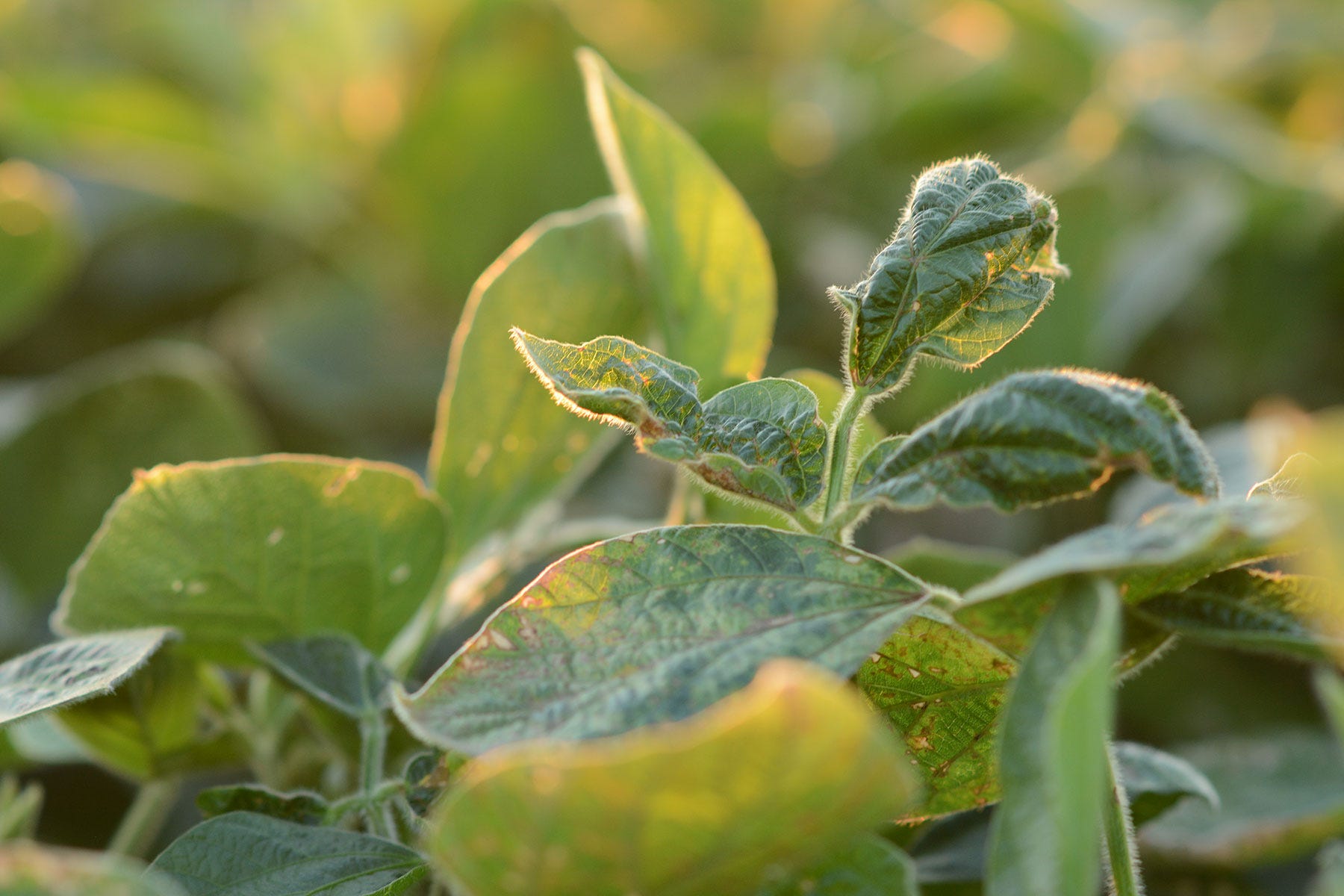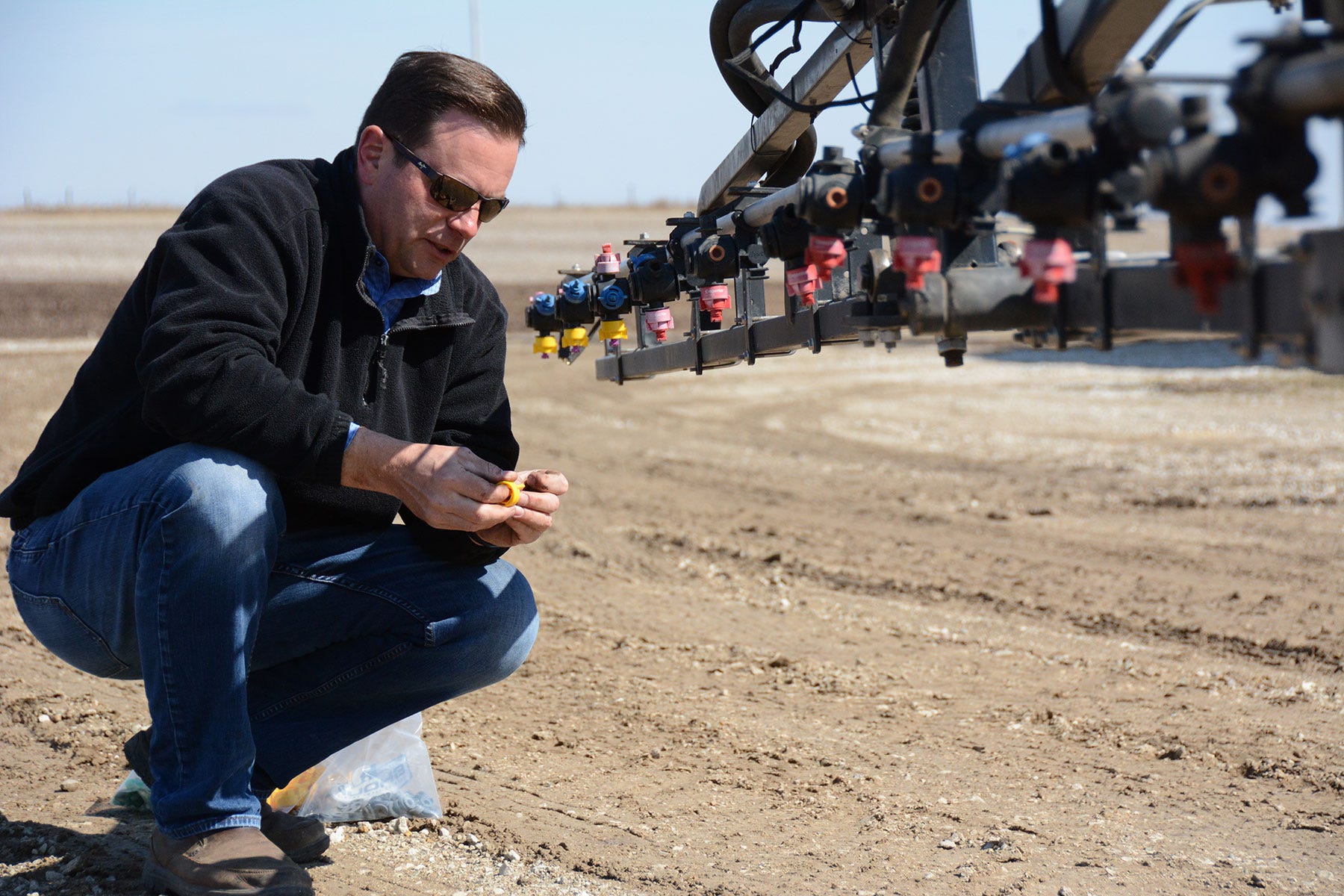March 22, 2024

At a Glance
- On Feb. 14, U.S. EPA announced existing stocks order for dicamba products after court ruling to vacate 2020 registrations.
- Implementation of EPA’s Herbicide Strategy would mean all pesticides need to be re-registered with ESA consideration.
- Farmers are exploring nonchemical weed control options as they face a future of uncertain pesticide use.
“I haven’t asked any questions that I don’t want the answer to,” says Matt Foes of Sheffield, Ill.
Foes farms along the Hennepin Canal State Trail, a protected state parkway trail stretching 100 miles between the Mississippi and Illinois rivers.
As rumors circulate about the future of the Endangered Species Act, Foes wonders if he’ll need to farm differently in the coming years to accommodate U.S. EPA guidelines.
“While any regulations coming on protected species might bring disruptions in farming practices, they are legitimate concerns to some folks, and as farmers, we need to listen and be open to all viewpoints,” Foes says.
Fortunately, he has extensive experience in nonchemical weed control after switching to non-GMO corn and soybean production in 2020.
Growing non-GMO crops also means Foes stopped planting dicamba-tolerant soybeans — a decision that’s paid off as the future of dicamba applications in soybeans hangs in the balance.
“Dicamba really wasn’t a silver bullet to make soybean growing super easy or super profitable. I fight waterhemp whether I have dicamba soybeans available to me or not,” he says. “There used to be a defensive aspect of why I planted dicamba due to the off-target movement that was happening.”
Foes still experiences dicamba drift from his neighbors, but it’s been significantly less in recent years as his neighbors have shifted to 2,4-D-based programs.
“Dicamba would have afforded an easier path to control weeds at certain times, but the opportunity to add $2.25 per bushel was more attractive to me,�” Foes says, referring to the premiums he receives for non-GMO soybeans.
Pesticide uncertainty ahead
On Feb. 14, U.S. EPA announced an existing stocks order for dicamba products following the Feb. 6 Arizona court ruling to vacate 2020 registrations of Bayer XtendiMax, BASF Engenia and Syngenta Tavium herbicides.
That means distributors can sell these products for the 2024 growing season if they were on hand by Feb. 6. The Illinois Department of Agriculture did not update its 2024 dicamba application guidelines, so they remain the same as in 2023:
Do not apply after June 20 or the V4 soybean growth stage.
Do not apply if the air temperature exceeds 85 degrees F.
Do not apply if the wind is blowing toward adjacent residential areas.
Do not apply if the wind is blowing toward adjacent Illinois Nature Preserves Commission sites.
Must consult FieldWatch sensitive crop registry before application.
Add in the implementation of EPA’s Herbicide Strategy and the Endangered Species Act, and the dicamba conversation gets even more complex. The ESA was developed in 1973 to protect endangered and threatened species and their habitats — so why is it making headlines now?
During the Weed Science Society of America annual meeting on Jan. 31, 2023, Jake Li, EPA deputy assistant administrator for pesticide programs, admitted the agency had registered pesticides for decades without ESA compliance. EPA has since been at the forefront of continuous lawsuits over ESA violations.
Aaron Hager, University of Illinois weed scientist, says EPA’s Herbicide Strategy and pilot program proposals related to the ESA keep him up at night.
Initially, EPA was ordered to announce its Herbicide Strategy this April or May. After receiving 18,000 public comments on the matter, the agency now has three additional months to develop its final strategy.
“The Endangered Species Act will likely fundamentally change how we apply pesticides here in Illinois very, very shortly,” Hager says. “I can’t really give any good reasons why it wouldn’t have additional impacts on the use of dicamba.”
Hager says some of the challenges moving forward are that courts can abruptly cancel pesticide registrations, and it takes four to 12 years for EPA to review pesticides under ESA.
Every pesticide undergoes re-registration every 15 years, and ESA considerations will now accompany this process. As 900 of the 1,600 species on the ESA list are plants and not animals, herbicide application will undoubtedly be affected.
“A lot of the dicamba court rulings have been similar — that EPA had grossly underestimated the effects that these registrations would have on nontarget species,” Hager says. “It might be challenging for dicamba to make it through an ESA evaluation.”
Weed control shift
As central Illinois became ground zero for dicamba drift issues, Karen Corrigan of McGillicuddy Corrigan Agronomics has been advising her customers on how to adapt their weed science programs in the wake of pesticide litigation.
“Farmers need to be prepared for adjustments to their herbicide program in the next few years,” says Corrigan, explaining that communication with suppliers on product availability will be key.

SPRAYING: As central Illinois became ground zero for dicamba drift issues, Karen Corrigan of McGillicuddy Corrigan Agronomics started advising customers to consider nonchemical weed control programs in the wake of pesticide litigation.
Hager and Corrigan agree that dicamba’s black eye will ultimately mean one less mode of action in the fight against herbicide-resistant weed populations.
“My concern has always been where this leads us — and it’s going to lead us somewhere we don’t want to go,” Hager says. “If we have additional restrictions that limit the utility of dicamba in corn, we’re going to have a real problem.”
Fortunately, most dicamba-resistant soybeans are also Roundup Ready and LibertyLink varieties, leaving farmers with glyphosate and glufosinate as potential alternatives. Hager adds that in glyphosate- and PPO-resistant weed populations, glufosinate could be effective.
But what can farmers do in situations where dicamba is further restricted and weeds are resistant to other available herbicides?
“Herbicides won’t be the answer to herbicide-resistant weeds,” Corrigan says. “Farmers need to implement cultural and mechanical options in order to have a more integrated weed management system.”
Corrigan suggests farmers explore nonchemical weed control options like tillage, narrow row spacing, seed destruction and weed zappers.

NONCHEMICAL: “With the continuing evolution of weeds, mechanical cultivation could be a necessary option going forward. I’m making sure I have that option in our weed control arsenal,” says Matt Foes, Sheffield, Ill., farmer.
On the farm
For Foes, a mixture of chemical and nonchemical weed control has been the key to managing weed populations. The backbone of his weed control program is residual control achieved from spraying Roundup, 2,4-D, and metribuzin as a spring burndown. He then sprays a strong multiple-mode of action mix of PPO inhibitors, Group 15 herbicides and metribuzin for preemergence spring application.
“I’m a big proponent of a strong residual component to employ against weeds, and then having your postemergence program as a cleanup rather than the backbone of your program,” Foes says. “I have turned my head away from very scattered weeds out in the field because if they’re purely cosmetic, the pursuit of perfection can be expensive.”
For postemergence control, he’s had success using nonchemical control methods, such as cultivating his 30-inch soybean rows.
“With the continuing evolution of weeds, mechanical cultivation could be a necessary option going forward,” he says. “I’m making sure I have that option in our weed control arsenal.”
Foes also uses a sponge applicator mounted to a self-propelled sprayer for breakthrough populations of waterhemp or giant ragweed. A neighbor who’s in organic production has a weed zapper, and Foes has considered hiring him for custom weed cleanup later in the season.
“It’s always a balancing act of what are the weeds going to cost you in the terms of yield and potentially fighting them for years to come, and what the cost of the weed control operation is that you’re doing,” Foes says.
About the Author(s)
You May Also Like






